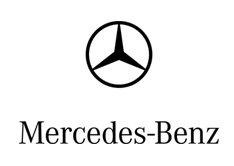Mercedes-Benz Citaro emerges as overall winner of International Bus Competition
 |
Despite high acquisition costs, it scores very highly in terms of overall economy Consumption figures equate to 0.5 litre of diesel per 100 passenger kilometres and 13.3 g/km of CO2 per passenger in practice Safety and comfort are unrivalled
Stuttgart--May 27, 2014: Buses form the backbone of public local transport and are expected to become increasingly important in the future. The reasons behind this include the fast-growing numbers of passengers and also the limits to capacity suffered by track-bound means of transport. Thanks to their flexibility and also outstanding energy and environmental performance, buses are ideally suited to enabling transport operators to meet these challenges. It is no surprise that express bus services such as bus acceleration programmes and also Bus Rapid Transit (BRT) systems are also becoming a subject of discussion in many regions.
It was in light of such considerations therefore that the 8th International Bus Competition (IBC) took place recently with the aim of identifying, under real-life test conditions, which urban bus best is placed to meet the requirements of regular service operators based on sustained economic efficiency, comfort, safety for passengers and drivers alike, and also outstanding environmental performance. Five manufacturers subjected their urban buses to the week-long comparison test. The vehicle which emerged as the overall winner was the Mercedes-Benz Citaro. It succeeded in securing first place in each of the areas of bodywork, suspension/handling/driving safety and also passenger comfort, and overall achieved a score of 85 percent of the possible total number of marks. With fuel consumption figures of 32.73 l/100 km in urban use and 30.72 l/100 km in rural use, it boasts the best fuel consumption. Its fuel consumption advantage of almost 2 litres/100 km compared with the fifth-placed vehicle equates to a reduction in fuel costs of around 15,000 euros over the vehicle's period of ownership and total mileage (approx. 10 years and 60,000 km/year).
On top of this there are also such aspects as the resale value, service/repair/maintenance, replacement parts, warranty/guarantee, etc., all of which contributed to giving the Mercedes-Benz Citaro an excellent score in the economic efficiency assessment, despite it having the highest acquisition costs in the test. This once again demonstrates that when it comes to making a long-term purchasing decision, acquisition costs are not the number one priority. "The investments made in our new generation Euro VI Citaro are now paying off: for companies, regular service operators, passengers and also for the environment", explains Hartmut Schick from Daimler Buses, commenting on the results of the IBC. The International Bus Competition (IBC) is the only comparison test for buses in Europe to provide decision makers with key measurements and assessments recorded under real-life conditions. Urban buses from five European manufacturers, representing more than 90 percent of the urban bus market, took part in the stress test which was carried out at the MVG (Munich Transport Company) at the end of March. The comparison test called for vehicle concepts capable of meeting Europe's strictest emission limits with their Euro VI environmental technology. The NTT (commercial vehicle technology test) team, comprising bus journalists and experts with extensive practical experience and headed up by well-known trade journalist Wolfgang Tschakert, put the five candidates through their paces over a period of one week. In the static tests, every detail was examined and scrutinized. The programme of tests included dynamic handling tests, brake tests, noise measurements and also the meticulous recording of fuel consumption and performance levels based on a wide variety of requirements.
In the five categories comprising engine and transmission, bodywork, suspension/handling/driving safety, passenger comfort and also cost-effectiveness, the test vehicles were subjected to a professional assessment as part of no fewer than 42 sub-evaluations. Extensive test results and reports are made available to decision makers and interested parties in the bus sector in the German trade journals "Busfahrt", "Nahverkehrs-Praxis" and "omnibusspiegel". In addition, the articles also document the fact that European bus manufacturers now supply Euro VI buses featuring the latest diesel and exhaust gas technology and which over the long term are able to reconcile aspects of efficiency, equipment, safety and comfort for tomorrow's public local transport with the economic opportunities facing public transport operators. Their levels of pollutants in terms of exhaust gas emissions have already reached the limits of detection.
The exemplary fuel requirements of the Mercedes-Benz Citaro are also evidence of the fact that in terms of energy efficiency and environmental compatibility, buses represent the optimum solution when it comes to competing in the transport sector. At just over 30 litres under real-life test conditions with a test load of 61 passengers, the result equates to a diesel consumption of 0.5 litre per 100 passenger kilometres or an output of 13.3 g/km of CO2 per km per passenger. These figures clearly speak for themselves.


